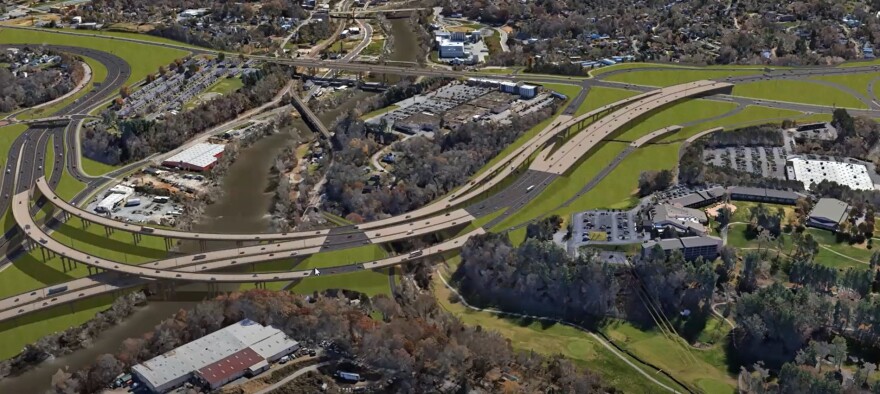The debate over the Interstate 26 Connector isn’t over yet.
On Tuesday, the Western North Carolina chapter of the American Institute of Architects and the I-26 Citizens’ Coalition released their joint recommendations for the sprawling, $1.2 billion project, which would link I-26 in southwest Asheville with US 19/23/70 in the city’s northwest.
The groups said their proposal includes the benefits of “lower noise and pollution impacts, safer routes for pedestrians and cyclists, improved neighborhood connectivity, maximized taxable and developable land, and a smaller overall project footprint.”
They submitted the proposal ahead of Sunday’s deadline for public comment on the project. The proposal is the result of a three-day design charette — “an inclusive, fast-paced design workshop” — held by the coalition earlier this month.
Last month, the North Carolina Department of Transportation held an open house to discuss its latest plans for the I-26 Connector, which has been in planning for decades. The NCDOT proposal did not include the original, community-led design that was drafted more than a decade ago.

Many local residents responded with shock, arguing that the new design — particularly the proposal for I-26 to pass over, rather than under, Patton Avenue — would be less safe for cyclists and pedestrians, increase sound pollution and have other negative effects on the city.
The local AIA chapter played a key role in the community-led design more than a decade ago. The I-26 Citizens Coalition is a group of residents, professionals, business owners and others advocating for a return to that original design.
In a statement Tuesday, the groups said they “wish to thank the thousands of individuals who helped to identify areas of concern and provided input on the final recommendations.”
“We are also grateful to the neighborhood associations, Asheville City Council members, the Buncombe County Commissioners, and the dozens of local volunteer design professionals who have supported this work,” they said. “We look forward to collaborating with NCDOT to review and evaluate our recommendations as the design is finalized.”

The issue is also expected to come up at Tuesday night’s Asheville City Council meeting, where the agenda lists a “Letter to the N.C. Dept. of Transportation regarding I-26 Connector Project” among the topics of presentation.
City officials have noted, however, that since the I-26 Connector is state- rather than locally-funded, the city is limited in its ability to impact the project.
Key recommendations from the WNC chapter of the American Institute of Architects and the I-26 Citizens’ Coalition include:
- Construct I-26 so that it passes below Patton Avenue west of the French Broad River, aligning it with the existing underpass “in order minimize trenching and avoid fiber optic infrastructure.”
- Either remove all I-26/240 exits to and from Haywood Road or maintain the existing exit infrastructure at Hanover Street, in order to minimize neighborhood impact and prioritize local traffic.
- Revert the Hill Street area to the 2020 design.
- Reduce the number of lanes throughout the I-26 Connector to a maximum of 6.
Sonia Marcus, a member of the I-26 Citizens’ Coalition, said in a statement that she is concerned about the increased sound and air pollution that the Patton Avenue overpass would bring, as her home is right next to the site.
“But I've seen over and over again during the 12 years I've lived here that there is a deep well of community spirit and wisdom here in Asheville that can be drawn upon in times of need," she said. “This is one of those times.”
NCDOT spokesperson Stephanie Johnson said the department has received the recommendations and plans to meet with the groups next month.
“We certainly consider all input from citizens and local officials when it comes to any project,” Johnson said in an email. “We are grateful for their input. We will continue working with City of Asheville staff, Buncombe County staff and stakeholders as this project develops.”







